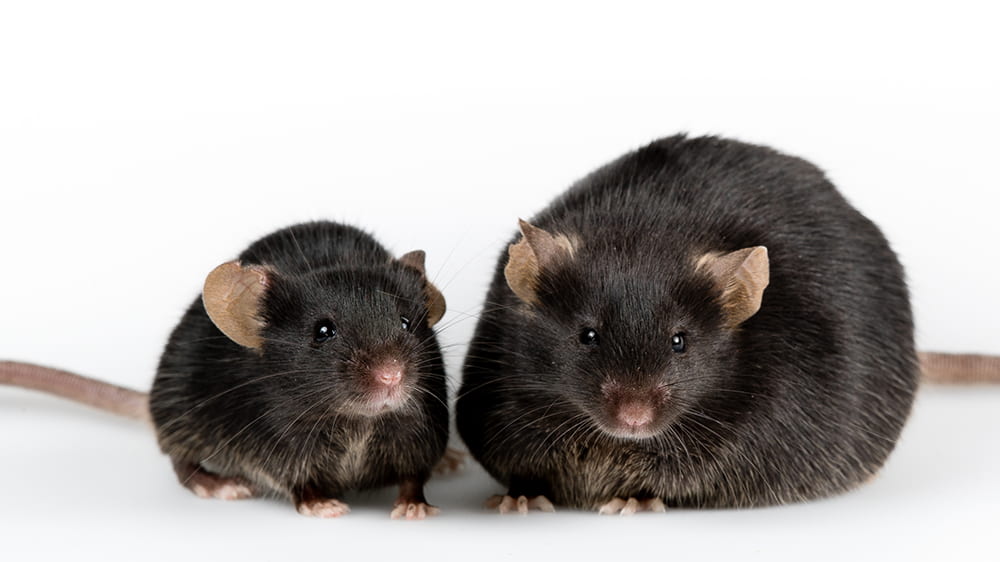
Dec 5, 2019 | Cancer, Immunology, Microbiome
A selection of health news from the University of Chicago and around the globe curated just for you.
The community in your mouth
Marine Biological Laboratory and DFI researcher Jessica Mark Welch, PhD, shares her research into oral microbiome, and what we can learn about healthy and diseased states from microbes’ relationships and interactions. (Smithsonian Magazine)
Common drugs linked with microbiome alterations
Patients who used drugs from 18 common drug classifications—including proton pump inhibitors, metformin, antibiotics, laxatives, and others—showed extensive changes in their gut microbiomes. (MedPage Today)
DFI researcher Tatyana Golovkina, PhD, named AAAS fellow
UChicago professors Melina Hale, PhD, and Margaret Beale Spencer, PhD’76, were also honored by the American Association for the Advancement of the Sciences—the world’s largest general scientific society. (UChicago News)
Urine microbiome predicts cancer immunotherapy response
UChicago physician-scientist Randy Sweis, MD, demonstrated that the presence of certain strains of bacteria could tell us which bladder cancer patients would face recurrence after immunotherapy treatment. (Healio)
Diets high in fiber and yogurt cut lung cancer risk
By collecting data from several lung cancer studies involving more than 1.4 million adults from the US, Europe, and Asia, researchers showed that high-fiber, high-yogurt diets reduced lung cancer risk by one third. (Futurity)

Nov 15, 2019 | Immunology, Microbiome, Neuroscience
by Elise Wachspress
Celiac disease is a serious autoimmune disorder. When those with celiac eat gluten—a group of proteins found in cereal grains like wheat and barley—their immune systems respond by inflaming and damaging the little “fingers” of tissue that absorb food nutrients in the small intestine.
About one in every 100 Americans has celiac, but many don’t realize it. The disease can be hard to diagnose, because symptoms are so diffuse: anemia, osteoporosis, loss of dental enamel, heartburn, headaches, tingling hands, joint pain, a blistery skin rash, etc. Children may suffer vomiting, diarrhea, poor appetite, muscle wasting, and even failure to thrive; adolescents may be abnormally small for their age, with delayed puberty.
Among the hardest symptoms to pinpoint and link to celiac is what some patients call “brain fog.” Those with the disease often report episodes of headaches, depression, moodiness, difficulty concentrating, fumbling to choose words, and/or feeling tired even though they just got out of bed. Sometimes only when people are diagnosed with celiac, change to a gluten-free diet, and then find these symptoms disappear do they realize how celiac inflammation affected the clarity of their neural processing.
The problem is, total gluten elimination is hard to accomplish. While gluten-free foods and restaurants are becoming increasingly common, food is fundamental to most social relationships, and it’s hard to manage every interaction without seeming prickly or oversensitive.
And many “non-food” products use gluten as an edible “glue” to bind mixtures together, including some vitamins, medications, lipsticks and lip balms, even bouillon cubes. Then there are the products one might never suspect involve gluten, like pickles, hot cocoa mix (Celiac patients often make their own), and soy sauce (One can substitute the safer tamari).
So what happens when a patient with celiac has an inadvertent exposed to gluten? Or the pizza shows up in your child’s school and resistance is low? Some people find themselves living through several days when their brains just don’t seem to function. Work and school become a challenge, even for people who are normally bright and creative. People accidentally exposed to gluten report symptoms from irritability to anxiety to full-blown panic attacks.
Bana Jabri, MD, PhD, has long been interested in understanding the neurological distress that sometimes follows accidental gluten exposure. She wants to find out if immune factors called cytokines, released in response to gluten exposure, affect brain chemistry and the nerve centers feeding back to the gut. Understanding the relationship would provide a better understanding not only the neurological mechanisms involved in celiac disease, but also in other autoimmune conditions, like multiple sclerosis and rheumatoid arthritis, in which patients also report similarly diffuse cognitive impairment.
Jabri has established a collaboration with Jean Decety, PhD, a UChicago neuroscientist internationally recognized for his work in using fMRI (functional magnetic resonance imaging) to understand affective behavior. While a handful of case studies have used fMRI to study extremely serious neurological symptoms in individual patients with celiac disease, no one has yet undertaken a larger study of how celiac creates the “brain fog” that seems such a common complaint.
The plan is to have patients undergo fMRI, immunological, and other testing before and after a controlled gluten ingestion, to map the changes in all these factors. Jabri and Decety hope the results will help generate novel insights into the neurological impact of the disease and potential therapeutic avenues to prevent these negative outcomes.
Right now they are searching for funding to support these studies. But what they find may make life a lot easier for the three million Americans living with celiac disease, some living in fear that they may accidentally ingest something that will put them in a fog for days.
Elise Wachspress is a senior communications strategist for the University of Chicago Medicine & Biological Sciences Development office

Oct 30, 2019 | Commercialization, Genetics, Microbiome
A selection of health news from the University of Chicago and around the globe curated just for you.
In the pancreas, common fungi may drive cancer
A new study found that certain fungi can settle in the pancreas, where the spur the growth of tumors. (New York Times and ScienceDaily)
Genetic differences in the immune system shape the microbiome
UChicago researchers showed that while the bacteria to which mice were exposed largely determined their resulting microbiome, genetic differences played a role as well. Drs. Chervonsky, Golovkina, Khan, and Antonopoulos featured. (The Forefront)
Polsky Center named the 2019 NASDAQ Center of Entrepreneurial Excellence
The award, presented at the annual Global Consortium of Entrepreneurship Centers, represents the highest honor that university entrepreneurship centers can receive. (Polsky Center)
PTSD nearly doubles risk for infections
The study found that PTSD affects infection risks for men and women differently, having, for example, more of an effect on a woman’s risk of urinary tract infection and a man’s risk of skin infection. (Futurity)
A new CRISPR technique could fix almost all genetic diseases
A less error-prone DNA editing method could correct many more harmful mutations than was previously possible. (WIRED)

Oct 16, 2019 | Microbiome
by Elise Wachspress
Relationships. Trust. Engagement. Leadership. A shared culture.
Often, a thriving community hinges on having a critical mass of members who reliably embody and stand up for these values. A core group that creates an environment where everyone—the weak, the hot-tempered, the shy, the energetic, the weirdos, and even the bombastic egotists—can all get along.
Yes, we are talking about your microbiome. And everyone else’s, for that matter.
Scientists who study the many dysfunctions of the human microbiome are entertaining the idea that gut—and systemic—health rely on a core group of bacteria whose “personalities” foster an environment where diversity can thrive long-term. These “universal colonizers” help smooth the inevitable challenges humans face: birth, development, sickness, even a wildly changing diet or variable climate. And that’s a good thing, because the human body has many different needs best served by a working balance of many different bacteria tunable to changing environmental conditions.
So maybe we should turn our attention from the inevitable “bad guys” who grab all the air time (Strep? Salmonella? Anthrax?) and try to figure out what kinds of bacteria can help the whole microbiome community work well together.
Thanks to research support from the Duchossois Family Institute, A. Murat Eren, known as Meren, is on the search for the foundational bacteria that set the stage for a balanced and happy gut flora. For this complex quest, he has pulled together a similarly diverse group of top citizens in microbiome science: Eugene Chang, MD, a specialist in inflammatory bowel disease; Bana Jabri, MD, PhD, expert in celiac; bioengineer and systems biologist Savas Tay, PhD; microbiologist Howard Shuman, PhD; evolutionary geneticist Luis Barriero, PhD; and epidemiologist Thomas Louie, MD, from the University of Calgary, a world expert in fecal microbiota transplant. (Yes, it is just what it sounds like.)
Identifying universal colonizers in an established gut community is challenging. How does one extract all bacteria living in one single gut environment and figure out which ones could thrive—and help others flourish—in any gut environment?
Meren’s first idea was to take a fecal transplant from one healthy donor, implant the microbiota in different recipients, and track how the bacterial populations change in different individuals. Initial analyses showed that while some of the bacteria colonized only one of their new hosts or none at all, some organisms were quite successful in multiple recipients.
These good colonizers also left their traces in individuals studied through the Human Microbiome Project (HMP), a National Institutes of Health initiative that collects microbiome samples from hundreds of healthy volunteers. But rather than zeroing in on all of the individual species in each sample—an all but impossible task with the available technology—the HMP painstakingly analyzes snippets of genetic code from whole communities of bacteria, generating tremendous amounts of data on the microbial mixtures in each of these volunteers.
This kind of communal sequencing, called metagenomics, has its limits. It’s like trying to recreate a recipe by analyzing all the chemical elements in a fully baked cake. It can work…sort of. With a great deal of user analysis and energy.
Following leads generated from metagenome studies, Meren’s team is working with some newer technologies, including a cutting-edge “long-read sequencing” approach which can look at much longer—and thus more uniquely identifiable—stretches of DNA. They also, thanks to Dr. Louie, now have access to a collection of potential colonizers much larger than their original “healthy patient #1.”
Even with the long-read sequencer, the work will depend on a lot of computational expertise. But Meren, whose group continues to hone anvi’o, an advanced, open-source analysis and visualization software that integrates many types of microbial data, has the team for the job. Meren’s leadership in creating anvi’o, a dynamic and unified work environment for data exploration, manipulation, and reporting, is empowering researchers with lesser bioinformatics skills to access and make use of many publicly available datasets, thus accelerating progress by the entire microbiome science community.
Now Meren and his team, especially graduate student Andrea Watson, senior research tech Karen Lolans, and post-doctoral scientist Florian Trigodet, PhD, are using their new long-read sequencing devices to zero in on some of the microbes who seem to have interesting stories to share. The aim is to identify the kind of microbial citizens who fosters a diverse gut community and thus helps their human hosts thrive.
Elise Wachspress is a senior communications strategist for the University of Chicago Medicine & Biological Sciences Development office

Oct 9, 2019 | Microbiome, Surgery
by Jordan Greer
Post-operative infections affect an estimated 300,000 patients each year and comprise as many as 11 percent of deaths among patients who end up in an intensive care unit. They are also the most common hospital acquired infection, and treatment costs range between $3.5 to $10 billion annually. Not surprisingly, efforts to reduce post-op infection and understand contributing factors are a major concern—for doctors and patients alike.
New research out of the University of Chicago Medicine’s Department of Surgery shows how the interplay between diet, antibiotics, and the microbiome may lead to fatal post-operative infection.
John Alverdy, MD, and Sanjiv Hyoju, MD, leaders of the study, used mice to explore this relationship. They fed one group of mice standard chow and gave a second group a “western,” high-fat, low-fiber diet which resulted in a near 35 percent increase in weight. Mice then underwent a partial liver resection, an otherwise fully recoverable surgical procedure. Prior to surgery, both groups received prophylactic antibiotics to prevent infection, mimicking common practice in patients.
However, survival outcomes diverged significantly between the two groups. Mice eating a high-fat, low-fiber western type diet suffered major infection-related complications following surgery. Seventy percent of the obese mice on the western diet died from bacteria-related infections—in stark contrast to mice fed standard chow, where only 10 percent suffered similar complications.
The results indicate that changes in the gut microbiome may in part be responsible. After 40 days on the “western” diet, mice showed a massive shift in the bacteria found within their guts. One kind of bacteria, called Bacteroides, were reduced to less than two percent of their former population in the mice’s guts. When the mice got both antibiotics and the western diet, the Bacteroides population was completely lost. Prior research had shown that Bacteroides can suppress harmful bacteria, and their elimination from the mouse gut could represent the loss of an important line of defense against infection.
In theory, antibiotics should be able to prevent infection even when Bacteroides aren’t present. Their job is to fight infectious bacteria, after all. But strangely, to add insult to injury, the antibiotics made some bacteria, especially one type of Serratia, more resistant to the antibiotics in the overweight mice. Though Serratia was found in both mice groups, only in the mice fed a Western diet did this strain develop antibiotic resistance and spread to internal organs, resulting in lethal sepsis. Most disturbingly, this deadly Serratia strain seemed to originate from the mouse’s own gut microbiome. And Serratia strains weren’t the only ones: other antibiotic-resistant bacteria were found in these mice as well.
This research illustrates a potentially troubling finding. As Dr. Alverdy noted, “We may have uncovered a lethal combination developing in some of our most at-risk surgical patients. The combination of a western diet and exposure to certain antibiotics appears to exert a direct—and negative—influence on the microbiome and may predispose certain patients to life-threatening postoperative infections.” Research like this provides greater understanding of the mechanisms of how diet and antibiotics shift the normal microbiome to resistance and suggests a more targeted approach, in which high-risk patients preoperatively rehabilitate their diets and are prescribed a more tailored regimen of antibiotics prior to surgery.
Results from Alverdy’s lab shed important light on other current findings: that organisms resistant to the antibiotics used for prophylaxis cause half of postoperative infections. These studies provide important clues to address this disturbing trend; they suggest we need to invest more attention to the role diet and the microbiome play in immune function and safer surgeries.
Better understanding of this relationship—through research efforts like those in the Duchossois Family Institute—will help medical professionals devise the best standards of surgical care for their patients and save more lives.
Jordan Greer is an Evolutionary Biology graduate student and science communication intern from the University of Chicago

Sep 27, 2019 | Food Allergies, Immunology, Microbiome, News Roundup, Research
A selection of health news from the University of Chicago and around the globe curated just for you.
Will these startups help biotech take root in Chicago?
Tom Gajewski is stepping into the spotlight with Pyxis Oncology, a cancer-therapy startup. He and co-founders John Flavin and David Steinberg raised $22 million to launch the spinout from his lab. (Crain’s Chicago Business)
Can gut bacteria heal food allergies?
How manipulating the microbiome could reverse and prevent peanut allergies and more. Cathryn Nagler featured. (Elemental by Medium)
Study finds an unexpected link between farming and immune system evolution
A new study by University of Chicago Medicine genetic researcher Luis Barreiro found the immune systems of hunter-gatherers showed more signs of positive natural selection, in particular among genes involved in the response to viruses. (phys.org)
Wash U team finds the ‘signature’ of guts that don’t get c. diff
Researchers have found the molecular signature of a healthy gut microbiome—the kind of bacterial community that keeps Clostridium difficilein check even in the aftermath of antibiotic treatment. (Futurity)
With new grants, Gates Foundation takes an early step toward a universal flu vaccine
Scientific teams from inside and outside the world of influenza research have been awarded funding to try to unlock mysteries that could provide the foundation for a future universal flu vaccine. Patrick Wilson featured. (STAT)
Human breast milk may help babies tell time via circadian signals from mom
The composition of breast milk changes across the day. Researchers believe this “chrononutrition” may help program infants’ emerging circadian biology. (The Conversation)
Just four nights with less sleep can alter fat storage
Restricting sleep for just four days alters how the body metabolizes fats and changes how satisfying meals seem, according to a new study with 15 healthy men. (Futurity)









